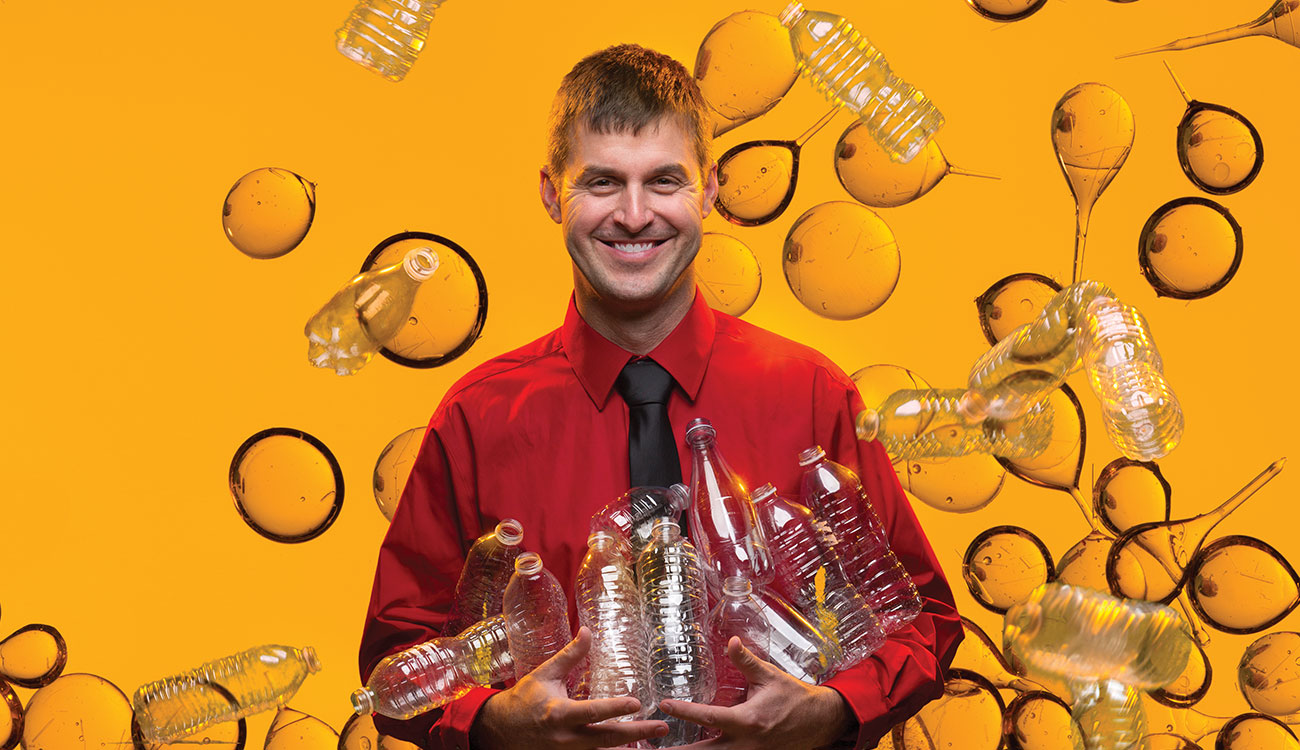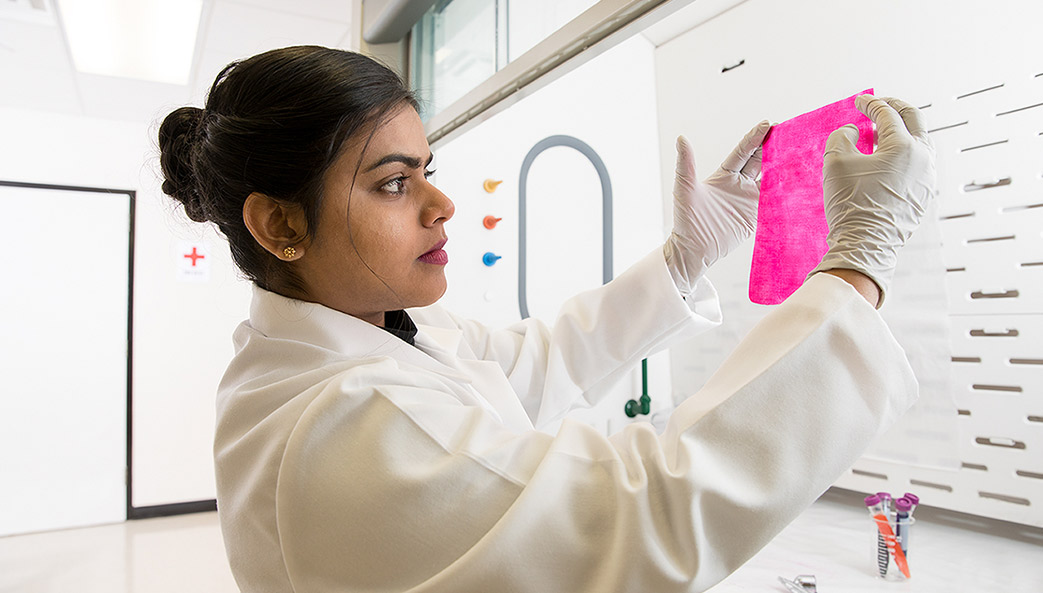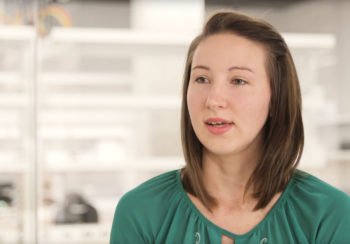It was more than 100 years ago when Leo Hendrik Baekeland took the stage at a meeting of the American Chemical Society and introduced the world to plastics. The Belgian-American inventor coined the term as he unveiled his latest creation, a moldable resin he affectionately dubbed “Bakelite.”
Made through a reaction of carbolic acid and formaldehyde, Baekeland’s eponymous invention was the first fully synthetic plastic, and because the amber-colored resin was reasonably strong and could take almost any shape, Bakelite quickly found its way into a variety of products, including electrical fixtures, telephones, toys and even novelty jewelry.
In very short order, the world had gone mad for plastics. A 1924 issue of Time magazine featuring a portrait of Baekeland on the cover described Bakelite as “a composition born in fire and mystery,” and the writers made a number of predictions about the adoption of this new technology that, in hindsight, are eerily prophetic:
“…in a few years it will be embodied in every mechanical facility of modern civilization. From the time that a man brushes his teeth in the morning with a Bakelite-handled brush, until the moment when he removes his last cigarette from a Bakelite holder, extinguishes it in a Bakelite ashtray, and falls back upon a Bakelite bed, all that he touches, sees, uses will be made of this material of a thousand purposes.”
In truth, demand for Bakelite waned as newer, more advanced polymers hit the market. What didn’t diminish, however, was our love affair with plastics. Humans now manufacture about 300 million tons of plastic every year—most of it derived from petroleum-based chemicals—and it’s hard to find a human activity where plastics do not play a role.
From food packaging to fishing line, computer cases to car fenders and surgical tools to shower curtains, plastics are ubiquitous. And therein lies the problem; plastics are everywhere but they don’t go anywhere. They’re made to be resilient, and they are so tough that something as commonplace as a soda bottle could persist in a landfill for centuries.
But there may be a solution to this problem. Scientists from Meredian Holdings Group, a biopolymer company in Bainbridge, Georgia, are working with UGA researchers to develop a new generation of plastics made from canola oil. They are just as strong and malleable as their petroleum-based cousins, but these plastics finish their life cycle being consumed by microorganisms in the soil whence they came.
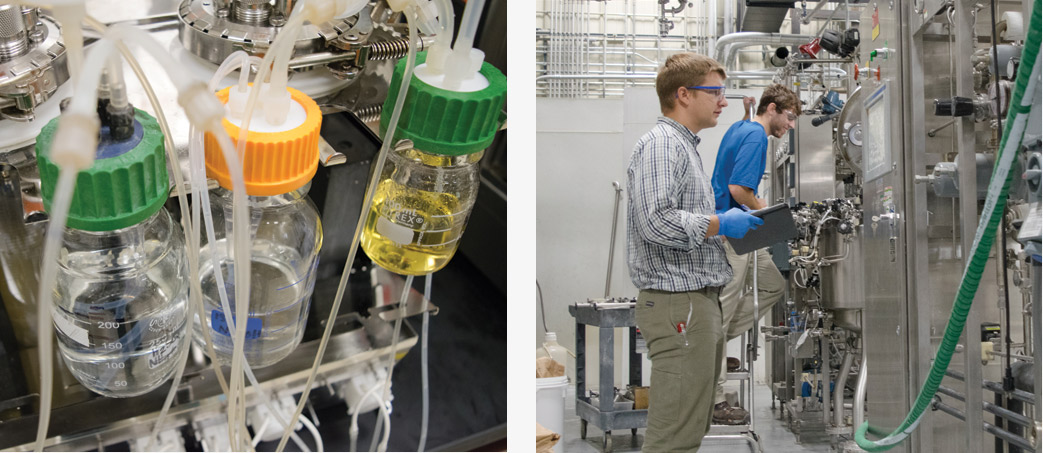
Sowing the seeds
When you walk into Joe Grubbs’ laboratory at UGA, you will find—amid the flasks, test tubes and whirring machinery—a small white bookshelf tucked away in his corner office filled with an array of plastic products.
He has bottles, cups, disposable flatware, instant coffee pods, shopping bags and even a fishing lure. At first glance, the products are unremarkable; they look and feel just like anything you’d find in a store. But looks can be deceiving.
“Everything you see here is biodegradable or compostable,” said Grubbs, a senior polymer scientist at MHG who received his doctoral degree in chemistry from UGA. “If you put one of these bags in the ground, for example, it will biodegrade.”
Most of these products are made of a substance called polyhydroxyalkanoate, or PHA for short, which begins its life cycle not in a laboratory, but on a farm.
Canola seeds are harvested from the field and crushed in a cold press to extract high-quality canola oil. Byproducts of the crushing process are returned to the farmer, who may use them as fertilizer and livestock feed.
The canola oil is then used as a source of carbon and energy for specially designed bacteria grown in bioreactors at MHG labs. The bacteria convert most of the oil to PHA, which accumulates as granules that fill the cytoplasm of the bacterial cells. Using proprietary technologies, the bacteria are harvested and the PHA is extracted, purified and dried to a powder.
The powder runs through an extrusion machine, which converts the raw PHA into small resin pellets about the size of a pea, and just like that, you have plastics made from plants. These pellets are then shipped to MHG’s business partners, who use the resin to manufacture all sorts of containers, packaging and utensils.
Products made from MHG’s PHA are certified as biodegradable and compostable in all media, including soil, freshwater and saltwater. The PHA is digested by microbes just as it was made, leaving behind only the basic elements of life: hydrogen, oxygen and carbon.
PHA can also be safely and quickly destroyed using controlled incineration without emitting toxic gases or ash.
While the products can biodegrade quickly, MHG scientists make sure that the plastics survive for as long as they are needed. They often perform as well as petrochemical plastics during manufacturing, in storage, on the shelf and during use.
“You can think of it like a book,” said Grubbs. “Books are made mostly of cellulose from trees, but if you keep them in the right environment, like a bookshelf in a library, they have an almost infinite lifespan; they can last for hundreds of years.
“The same thing is true of products made using our PHA,” he said. “It’s not until the plastic is exposed to microbes in the soil or the water for a significant period of time that biodegradation can begin. So this isn’t going to break down on a shelf or while you’re carrying it around.”
The applications for PHA are limited only by one’s imagination, and MHG scientists are constantly developing new techniques to optimize PHA for industry partners.
PHA bioplastics may be used to create toys, cups, straws, lids, utensils, plates, bottles, food storage bags, shopping bags, diaper linings, wipes, trash bags, labels, glues, tape and even crayons.
“There are literally thousands and thousands of potential versions of our PHA-based polymers,” Grubbs said. “Some might be good for bottle caps, some might be good for cutlery; all we need is time and research to make it work for a new application.”
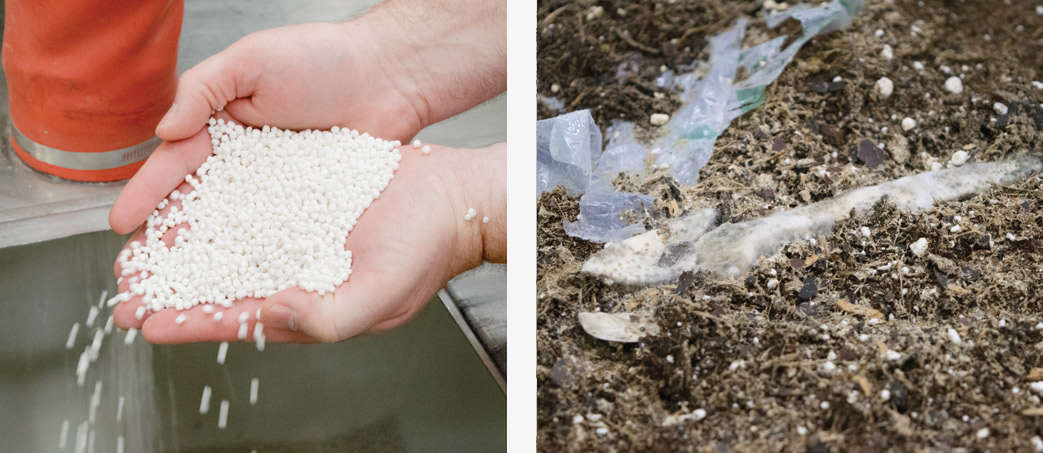
In full bloom
MHG’s research and development capabilities were boosted recently through an agreement with UGA that provides the company with access to advanced scientific equipment and laboratory space on campus as well as opportunities to consult with UGA faculty experts.
By tapping into the university’s resources, MHG is able to more rigorously test and evaluate the properties of bioplastics created at the company’s Bainbridge facility.
“The University of Georgia relationship has helped us to accelerate our development as well as provide the next generation of employees who will be critical to our continued growth,” said Stephen Croskrey, MHG’s chief executive officer.
Grubbs, for example, is using UGA lab space to test PHA-based aqueous coatings for cups and containers. These coatings provide a barrier between paper products and food products like hot coffee, which would otherwise cause the paper to disintegrate.
He was recently joined by Richard Eaton, a senior research scientist and director of strain development at MHG, who uses molecular genetic tools to modify Cupriavidus necator, the bacterium that converts canola oil into PHA. Eaton’s goal is to improve the yields and alter the properties of PHAs produced by various C. nectar strains.
“Having this lab space on campus has made it a lot easier for us to focus our efforts,” said Grubbs. “We also bring UGA students into the lab so they can get some real-world experience while they work towards their degrees.”
MHG has also provided financial support to several UGA faculty members who are working with the company to test and improve their products.
The company recently made a $50,000 contribution to Jenna Jambeck, an associate professor in UGA’s College of Engineering, to compare petroleum plastics with MHG’s PHA plastic in controlled marine and freshwater environments.
Jambeck knows all too well how dangerous traditional plastics can be; she led a landmark study that calculated for the first time the magnitude of plastic waste going into the ocean. Published last year in the journal Science, the study found that an average of eight million metric tons of plastic entered the ocean in 2010, all from people living within 50 kilometers of the coastline.
“Thoughtful material choice is so important, especially for plastics,” Jambeck said. “It’s important to know how plastics behave in our recycling and composting systems, but we also need to know what a product does in our environment, including our oceans.”
MHG also provided $250,000 to Jason Locklin, associate professor of chemistry in UGA’s Franklin College of Arts and Sciences. Locklin specializes in growing functional polymers,
and his laboratory will study the properties of biopolymer blends. He is also working on a project that will use PHA as component for controlled-release fertilizer, which prevents the overuse of fertilizer by gradually releasing a steady stream of nutrients to plants as they grow and mature.
“MHG technologies have tremendous potential as an environmentally friendly alternative to traditional plastics, and the partnership we’ve developed will ultimately help strengthen Georgia’s economy and create new jobs,” Locklin said.
Mark Eiteman, a professor of biochemical engineering and microbiology in UGA’s College of Engineering, received $41,500 from MHG. This gift will be used to train students on current technologies to metabolically engineer microorganisms. Eiteman has more than 25 years of experience in the field, and he specializes in designing microbial processes to produce both monomers and polymers from renewable feedstocks. With his expertise, MHG hopes he can train and mentor the next generation of employees.
“MHG’s mission aligns well with UGA’s research interests in new materials, and this partnership gives our faculty and students a unique opportunity to work with cutting-edge bioplastics,” said Derek Eberhart, director of UGA’s Innovation Gateway, which supports companies through its incubator program. “These products could transform the plastics industry, and we are happy that the university can play a role in their development.”
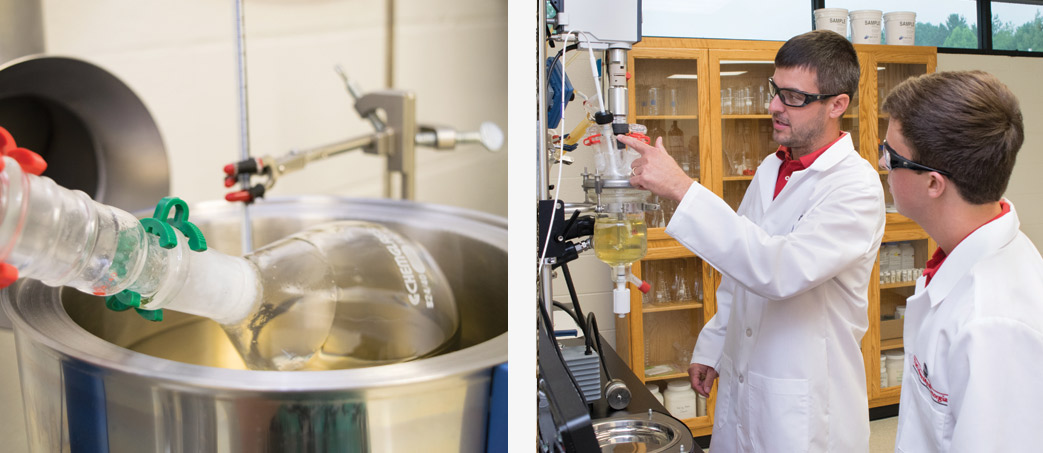
Reaping the harvest
MHG has come a long way since it began operations as a small startup company in 2004.
“I remember when we were little more than a group of people huddled around a laptop in a conference room,” said Scott Tuten, MHG’s chief marketing officer, who has been with the company since its inception. “We’ve made a lot of progress since those days, and we’re always looking for opportunities to grow and expand.”
And expand they have. MHG now operates two facilities on their 135-acre campus in Bainbridge with well over 200,000-square-feet of state-of-the-art laboratory and manufacturing space. The company became the world’s largest producer of PHA last year following the startup of their 20,000-liter commercial fermenter, and they now own more than 125 patents in nearly 20 countries.
Earlier this year, MHG was awarded the 2016 Phoenix Award by Georgia Bio and the Metro Atlanta Chamber for their commitment to education and innovation as well as their contributions to the growth of the state’s bioscience industry.
“The bioscience industry is a vital economic sector in our region,” said David Hartnett, senior vice president of economic development at the Metro Atlanta Chamber. “Companies like MHG, which support collaborations with academia, help spur new innovations in sustainability and renewability while advancing the industry and creating jobs.”
MHG has certainly been a job creator for the university. You don’t have to go far in their bustling factory to find a UGA graduate, but that’s all a part of their plan.
“MHG supported me while I finished my doctoral work at UGA, and since that time I’ve really learned to appreciate the special relationship between our company and the university,” said Grubbs. “As MHG grows, I’m sure there will be a lot of opportunities for UGA students who are interested in this field, and together, we can work to build a more sustainable future.”



